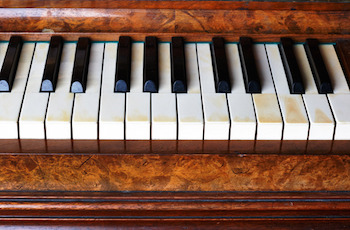“I’ve never owned a piano before, but am now looking at one for my young daughter who would like to play. Depending on which one we get, how often will I have to replace the piano strings? Is there a difference between getting an old piano or a new one?”
The average modern piano that is in use in most houses across America today have over 230 strings with a combined tension of 15 to 20 tons. And if you upgrade and move into the concert grand pianos, the combined string tension will be up to 30 tons or more.
With that much tension, you could assume that strings would easily break, needing repair on a frequent basis. That’s not necessarily true.
When a manufacturer builds a piano, his main area of focus is on the scale design, which refers to the calculations made to determine the pitch, diameter, length, and the tension of each wire. A good piano will have a better scale design, which means the engineers within the manufacturer spent the time constructing the piano in such a way that it plays at a superior level. They test, do more calculations, construct and test again until the ideal sound is achieved.
If you look at the wires within your piano, you’ll discover that more than one wire is used to produce each note. For the bass notes, one or two wires may be used, while the higher notes will have three. The wires used for each note helps determine the volume of the sound. A large bass string will produce more volume than a smaller plain wire. The volume is balanced by increasing the number of strings for treble notes, and fewer for the larger, fuller notes in the bass section.
Occasionally a wire may break and will need to be replaced. Piano strings can break for a variety of reasons.
- In most cases, a string becomes rusty, weakens and breaks.
- The string may become kinked or bent over time.
- The string may be defective.
- Strings can become brittle over time.
- They are used extensively and simply wear out.
When a string breaks, there are several options.
In some cases, a broken string can be repaired by splicing in a short piece of new wire into the existing wire. The advantage is by using the old wire, it will better match the tonal quality of the surrounding strings.
In some cases, the broken string can be replaced by new wire. Piano wire comes in different sizes and types, so its important to choose a gauge wire that matches the one being replaced.
And in some cases, for an older piano, it may be best to restring the entire piano. If strings break on a consistent basis, or rust is prominent throughout the strings, it may be better to bring new life to your piano and provide it with a complete restringing.

